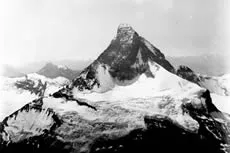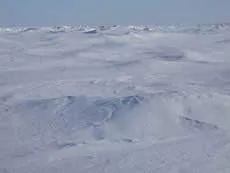Cryosphere glossary
fine dust or salt particles dispersed through a portion of the atmosphere; the particles are so small that they cannot be felt or individually seen with the naked eye, but they diminish horizontal visibility and give the atmosphere a characteristic opalescent appearance that subdues all colors; a type of lithometeor.
equilibrium between the gain and loss of heat at a specific place or for a specific system.
the equilibrium that exists between the radiation received by the earth and atmosphere from the sun and that emitted by the earth and atmosphere.
relation between fluxes of heat into and out of a given region or body and the heat stored by the system; in general, this budget includes advective, evaporative, and other terms as well as a radiation term.
the amount of heat required to raise the temperature of a unit mass of a substance by one degree.
an ice-wedge polygon in which melting of the surrounding ice wedges has left the central area in a relatively elevated position.
typically thin, white clouds above 6,000 meters (20,000 feet); at these altitudes, temperatures are so cold that clouds are composed primarily of ice crystals; includes cirrus, cirrocumulus and cirrostratus clouds.
a deposit of interlocking ice crystals (hoar crystals) formed by direct sublimation on objects, usually those of small diameter freely exposed to the air, such as tree branches, plant stems and leaf edges, wires, poles, etc.; the surfaces of these objects are sufficiently cooled, mostly by nocturnal radiation, to cause the direct sublimation of the water vapor contained in the ambient air.
a peak or pinnacle thinned and eroded by three or more glacial cirques.
Image

The Matterhorn in Switzerland was carved away by glacial erosion.
World Data Center for Glaciology, Boulder, CO
from the point of view of the submariner, an ice canopy containing no large ice skylights or other features which permit a submarine to surface.
(1) water vapor content of the air. (2) some measure of the water-content of air; see also absolute humidity, relative humidity, specific humidity, dew point.
(1) [sea ice] a smooth hill of ice that forms on the sea ice surface from eroding ridges, particularly during the summer melt; the formation of hummocks is similar to young mountain peaks with steep slopes that erode into smooth, rolling hills. (2) [frozen ground] Small lumps of soil pushed up by frost action, often found in uniformly spaced in large groups. Hummocks can form in areas of permafrost or seasonally frozen ground, and are one of the most common surface features of the Arctic.
Image

Hummocks make the sea ice surface appear as rolling hills.
Ted Maksym, United States Naval Academy
a form of weathering that affects all rocks; water freezes in pores and cracks, which leads to an increase in specific volume (vol/unit mass) of the water, producing stress that is greater than the tensile strength of all common rocks; ultimately leads to shattering and fracturing of the rocks.